Names
- Lhasa Apso
- Tibetan Prayer Dog
- Bearded lion dog
- Longhaired dog
- Literally means long haired dog from Lhasa
Conservation Status
LEAST CONCERN
Origin
Tibet
Physical Traits
- Type: Companion/Utility
- Classification
- American Kennel Club: Companion Dog
- United Kennel Club: Companion Dog Group
- Weight: Male 6 – 8 kg; Female 5 – 7 kg
- Height: Male 24 – 28 cm; Female 23 – 26 cm
- Coat: Double coat, outer long coat much like human hair, dense inner coat
- Colour: Various
- Litter Size: 3 – 6
- Life Span: 12 – 15 years, oldest dog survived for 29 years
- Breed Standard download
The Lhasa Apso

The Lhasa Apso is a small breed of dog from Tibet. They are one of the oldest dog breeds of our planet. The Lhasa Apso is an excellent indoor guard. In ancient times people used this dog to guard monasteries to alert monks of intruders. Their small size, sharp bark, and alert senses helped them excel as indoor sentinels.
The name Lhasa Apso means a hairy dog from Lhasa. To the people of Tibet, the Lhasa Apso is more than a dog. Tibetans believe that the spirit of deceased priests enters these dogs. For this reason, Tibetans consider the Lhasa Apso as a harbinger of good luck.
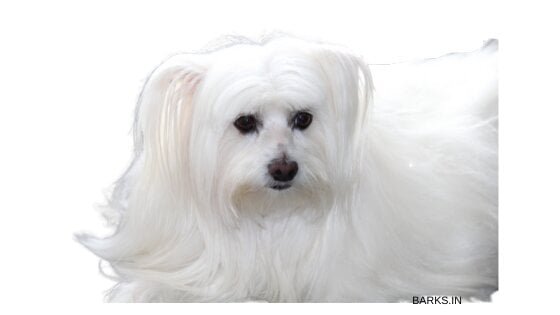
Today, the role of the Lhasa Apso has changed. They are no longer palace or monastery guards. The Lhasa Apso is a family companion dog. Everyone from ordinary people to world leaders has fallen in love with this dog.
Tibetan origin made the Lhasa Apso hardy. They are resistant to most canine diseases and live long years. Don’t let the cute looks fool you. The Lhasa Apso is not a toy dog. The only way to gain the Lhasa’s trust is through mutual respect.
History of Lhasa Apso

These little dogs are an intricate part of the Tibetan culture. The earliest record of this dog is from as far back as 800 BC. This makes these dogs one of the oldest dog breeds in the world.
Many of the Lhasa Apso dog’s traits are a result of its environment. Its double coat provides insulation from the elements. Their long hair also protects their eyes from dust. Their dense inner-coat is waterproof; it protects them from the snow and frigid conditions. The origins of the Lhasa Apso is fascinating.
Lhasa Apso’s origin story

The Lhasa Apso is an ancient breed of dog. Some say they are as old as their land. It is not easy to trace the roots of a dog that is eons old. Going through the pages of time only reveals fables about this dog’s beginnings.
There are four schools of thought on this Lhasa Apso’s origins.
Tibetan Origin

This is the most widely accepted origin story. There are records to prove this claim. Each year the Dalai Lama gifts these dogs to the Chinese emperor. This has been in practice for many centuries.
Mongolian Origin

Some claim that this dog was from Mongolia. Brought to Tibet during the war with Tibet. This is more of a story than a fact. People claim that the name “Apso” is a Mongolian word, and so this dog.
Is Lhasa Apso a runt of other Tibetan Dogs?
One story claims that these were “runts” of other large breeds of dog from Tibet. Shepherds handed over the runt of their litter to monks. Weak pups could not survive the hostile weather and the monks took care of these dogs. These teacup pups they say were the first Lhasa dogs.
This story has some merits for two reasons.
- The runt of the litter is weaker than the rest. The Lhasa is the smallest of the Tibetan dogs.
- The name of this dog has been debated for decades. This was because the dogs from this part of the world look the same.
The Apso Seng Kyi – From the snow lion
The Lhasa Apso is known as “Apso Seng Kyi,” which means the Bearded Lion dog. People say the snow lion becomes the Apso Seng Kyi when it comes down from the mountains. The Tibetan emblem is the snow lion, which represents strength, courage, and joy. To be called the Lion is a great honor.
While this story might be a legend, it shows the dog’s status in its own country.
Concluding the origin story
Some experts believe that this dog is more than 4000 years old. Some say that these are 2000 years old. All of them agree that this dog is one of the oldest in existence. It is difficult to pinpoint the origins of any ancient breed of dogs.
We can conclude saying these dogs are from Tibet in 800 BC. They might be teacup pups of other dogs. No matter how they came about, they are cute and adorable dogs.
Introduction of Lhasa Apso to the outside world
The 18th century saw the British arrive in Tibet for the first time. Tales about these dogs started circulating after the British arrival. It was in the year 1854 when the British brought the Lhasa Apso to India.
In 1920, Frederick M Bailey took a pair of dogs to Britain. He was the first person to set up a line outside of Tibet. It was his involvement that brought these dogs to light.
Imports to the US soon followed with the visit of Bailey’s friend Charles S Cutting to Tibet. His ties with the 13th Dalai Lama made way for the first Lhasas to arrive in the US.
In 1931, he sent a pair of Danes to the Dalai Lama. In 1933 the Dalai Lama sent him a pair of beautiful Lhasas. A male, Taikoo, and a bitch, Dinkai. This pair of dogs were the first to arrive in the US. These early dogs formed the famous Hamilton line in the US.
This small dog from the roof of our world has traveled far and wide. Thanks to the efforts taken by pioneers like Cutting. This adorable dog can now live in our homes.
Numerous efforts are underway to preserve the true Lhasa Apso. The most notable being the Gompa dogs. These dogs are direct descendants from the Drepung monastery in Tibet.
It’s all in the name Lhasa Terrier versus Lhasa Apso

No other dog has got the name changed as often as this dog. Until the 1930s, Lhasa Terrier was the name that was in use.
In 1933 Margaret Hayes wrote a letter to the American Kennel Club. In her letter, she points out that these dogs are not Terrier type dogs. It was only in 1956 this dog was changed from the Terrier group to the non-sporting group.
Tibetans separate these dogs by color. The Apso is the honey-colored dog. On the other hand, Lhasa is in all the other colors.
The Indian Kennel Club, then managed by the British grouped these as toy dogs.
The early days of this dog were filled with confusion and chaos. Thanks to efforts by people like Hayes, this dog strides on.
Physical Traits of the Lhasa Apso
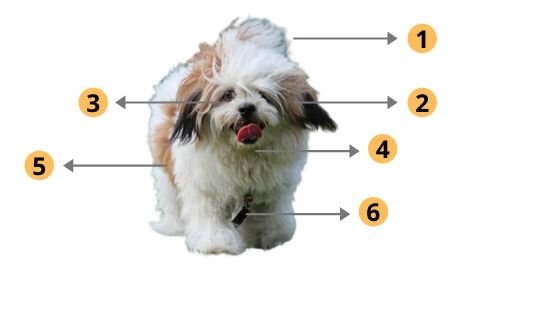
This is a small breed of dog, 25 cm to 28 cm in height, and weighing about 7 to 8 kgs. It has a rectangular body; they are longer than tall. The Lhasa holds its tail over the back, almost like its head.
The funny thing about them is that they look alike from the front and back. The Lhasa’s curled tail, when covered with a show coat, looks the same as its head. People love these dogs due to their lush hair.
Their long fur is the most notable trait of this dog. The coat hides the eyes; the Lhasa also sports a beard.
These dogs occur in several colors. They are white with a mix of other dark colors. Their name, the lion dog, comes from the wheatish, honey dog.
General appearance of the Lhasa Apso

The general appearance of the Lhasa Apso should reflect it’s indoor sentinel origins. This dog should be small, sturdy, and well-balanced. All the parts of the Lhasa Apso’s body should be in proportion to each other.
The Lhasa should be heavily-coated and not patchy. The body should be rectangular, they are longer than tall. Assertiveness and alertness are the hallmarks of their temperament.
Head of the Lhasa Apso

The eyes and the overall head makeup of the Lhasa should reflect their purpose as the indoor guard. The head should be covered with fur with good fall over eyes, long whiskers and beard.
The Lhasa Apso has a small head, and it joins the muzzle at a moderate stop. It flattens or falls away after the eye socket. Apple-shaped or dome-shaped head is a fault.
The eyes of the Lhasa must be almond-shaped. Overly big round eyes or small sunken eyes are considered a fault. The eyes are dark brown with dark eye rims and lips giving them their cute looks. The muzzle of the Lhasa is straight and not square.
They have a short muzzle, and their lower jaw is undershot. In other words, their upper jaw is longer than their lower. This is a flaw in other dog breeds, but in these dogs, this is well-known. When the dog’s mouth is closed, its teeth should not show.
Body of the Lhasa Apso
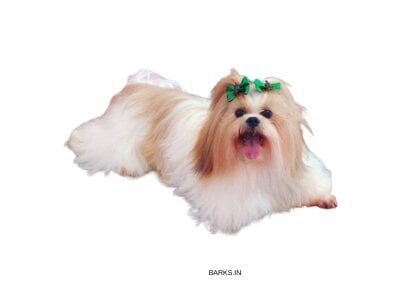
The neck of the Lhasa Apso is moderate in length and must blend into the shoulders. The frame is rectangular, they are longer than tall. The Lhasa Apso has a deep chest that extends lower than its elbow. The tail must have heavy feathering, with a curve, and must be over their body.
The Gait of the Lhasa
The gait should reflect its balance and well-defined proportions. Lhasa’s movement is both graceful and effortless. The movement of their legs must be parallel to each other.
Lhasa Apso’s famous coat
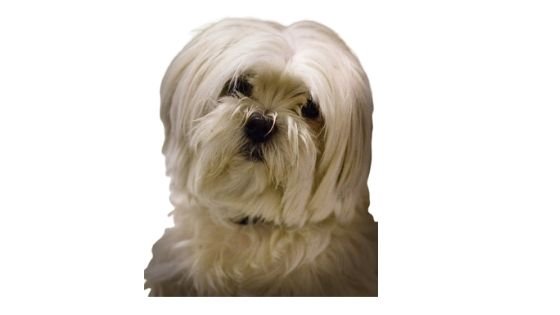
The very first breed standard for Lhasa Apso (1901) states that
The coat should be heavy, of good length, and very dense… In general appearance, the hair should convey the idea of being much harder to the eye than it is to the touch. It should look hard, straight, and strong when to the touch, it is soft but not silky. The hair should be straight, with no tendency to curl.
1935 breed standard revision states,
Heavy, straight, hard, not woolly nor silky, of good length, and very dense.

The Lhasa’s coat should be uniform all over the body. It should not appear patchy. The strands of their hair are thick and should feel grainy to the touch. The Lhasa’s hair is not as silky as it seems.
These dogs have double coats. The outer guard hair is the same as our hair, long and robust. The inner coat is soft and thick. It is the inner coat that provides these dogs with insulation and keeps them dry.
There are two types of coats, long and short. These are not two types of dogs. Some let their dogs to grow long hair and some people trim Lhasa’s hair. The long hairs require grooming, so some people cut it short.
The arid and cold climate gave Lhasa its long coat. Without this double coat, they would not have survived the freezing weather. It this the coat that gave them protection from the elements.
Tibetans prefer dogs with hardy and long hair. The dogs from Tibet and the dogs in dog shows look different from each other. The show dog has a coat that is not acceptable in Tibet. Tibetans look for hardy guard dogs, not the toy-like dogs seen today.
Shedding in Lhasa Apso

The Lhasa’s hair is grainy and thick and does not float in the air. Shedding is hair similar to humans. They shed their hair slowly and daily in small amounts. Long hair does not mean insane shedding. Lhasa’s shedding is manageable, and in time, you will not notice it.
Can I get allergies from Lhasa’s flakes and dander?
The risk of Lhasa’s fur, causing an allergic reaction in people, is quite low. They are hypoallergic dogs. In most people, allergies are caused by dander from their dogs. All dogs have flakes and dander, not just these dogs.
Daily grooming and care for the Lhasa’s fur help us to keep it free of dander. People with allergies from flakes and dander can live with these dogs. Grooming their coat removes debris that might get caught in their long hair. It also keeps the Lhasa mat and tangle-free.
The temperament of the Lhasa Apso

The Lhasa has a comical and enjoyable character. They will enrich your life as long they are around. People say Lhasa bonds for life. If you plan to get one, don’t ever abandon them. These dogs will light up any home they live in.
This is an indoor guard dog and is wary of strangers. Train and socialize your dog while they are pups to prevent aggression. Don’t be misled by their cute and cuddly looks. They are one of the toughest, strong-willed small dogs around.
You can build trust with your Lhasa only by mutual respect. They are no pushovers and have a strong will.
Natural distrust towards strangers
Lhasa’s being indoor guardians are wary of strangers. The AKC describes these dogs as “chary with strangers.” In monasteries, they take high walls as vantage points from where they look out for thieves. They are alert and have a keen sense of smell and sight.
These are not dogs that are all bark and no bite. They can do severe damage with their small mouths.
Socialize your dog with friends while they are young. People mistake their looks. A stranger picking up your dog could result in sharp bites.
Resource guarding in Lhasa Apsos

The Lhasa has a strong guarding instinct and can resort to resource guarding. All dogs guard their toys. As dog owners, we need to learn to manage this trait. A guard dog with excessive resource guarding can make life difficult.
A dog guards its toys (any other thing) when they perceive others as a threat. This can be due to many reasons. One reason for a dog to do this is because it feels insecure.
The best way to deal with this is to use a reward as an exchange. Don’t confront your dog, it can only make things worse. Always use a treat as an exchange. Keep a close lookout to weed out this trait gradually.
Champion companion
In our view, this dog is a champion companion. They are intelligent, loving, and are protective. Your dog will enjoy being around you. People say that these dogs can read minds, and we agree with them. They know when you are happy or sad.
The Lhasa change based on your mood. They can sense nerves around people and react to people based on how you feel.
They are playful and comical with kids. Lhasa can be taught tricks. Many people don’t realize that these dogs have an excellent sense of smell. They excel in playing hide and seek around the house.
The assertive will of the Lhasa Apso
Any description of their temperament must include their strong will. In Tibet, people call this dog as Apso Seng Kyi, the lion dog. It is a reference to both its looks and its nature.
They say when these dogs look into the mirror, they see a snow-lion. They are lions, indeed!
They are assertive while on guard duty. It is better to heed this dog why they are on guard, do not mess with them. They start with sharp warning barks that are like a yap. When the warning barks are ignored, aggressive barking follows. Ignore these threats, the Lhasa will defend with its mouth.
How to Care for a Lhasa Apso?
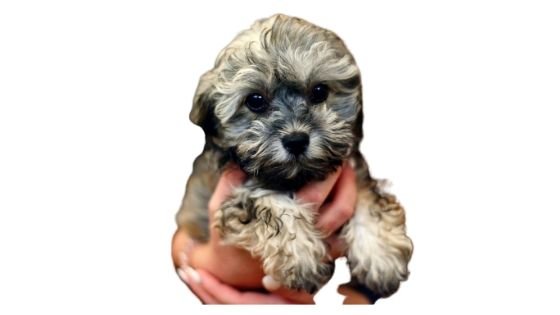
Lhasa Apsos are active and alert around the house. Include a walk and some playtime on their average day. These dogs remain active all through their day. A walk or two is more than enough for them.
You will find your dog patrolling your home. It is funny to watch this small dog visit each room. They make sure everything is safe and secure before they settle down.
Exercise requirements of the Lhasa Apso

Lhasa Apsos are active and alert around the house. Include a walk and some playtime on their average day. These dogs remain active all through their day. A walk or two is more than enough for them.
You will find your dog patrolling your home. It is funny to watch this small dog visit each room. They make sure everything is safe and secure before they settle down.
Common Health Ailments in Lhasa Apso

While they are a hardy breed of dog, it is essential to know about their health. They are prone to some ailments. Inbreeding has given them weak hips and joints. They also suffer issues with their eyes.
- Hip Dysplasia: This is a painful condition that affects the dog’s hips. Make sure your puppy is certified by OFA for “fair” hips. Never buy from “breeders of profit.”
- Patellar Luxation: This is another joint-related issue that affects this dog. The knee slips out of its socket, causing the dog to lose its balance.
- Keratoconjunctivitis Sicca (Dry eyes): SSome dogs have dry eyes. The lack of aqueous tear causes their cornea to become dehydrated. Keep the hair out of their eyes to prevent this.
- Cherry Eye: Lhasa’s beautiful round eyes get affected by cherry eyes. The third eyelid or the corner of their eyes swell up like a small red cherry.
- PRA (Progressive Retinal Atrophy): PRA is a severe eye issue that leads to loss of vision. It starts with night blindness, and the dog slowly loses its sight. If you spot any problems with your dog’s eye, seek medical help.
- Food allergies: Being a small breed of dog, they are vulnerable to food allergies. Use only fresh ingredients if you are cooking for your dogs. If you are buying off the shelf, buy only quality dog food.
Kindly note that this list is not complete. Our aim was to equip you with the common issues that this dog suffers. Use this list only as a guide.
We recommend that you choose a reputable breeder. Only buy from a breeder who is in good standing with a Kennel Club. Do not buy from breeders of profit or from pet shops.
Nutritional needs of a Lhasa Apso

Lhasas need a balanced diet to lead a healthy life. Experts estimate that an adult dog weighing 7 kgs needs about 550 kcal each day. Dogs that leads an active lifestyle will need more calories per day.
To know which dog food is best for your dog, read our review of the best dog food in India.
Lhasa Apso’s nutrition should include a wide variety of food. They require
- Water
- Proteins and fats
- Carbohydrates
- Vitamins and minerals
Choose a grain-free dog food for your dog. There are several specialty foods available to choose from. Talk to other Lhasa keepers in your area to find a brand that will suit you.
Young adults and puppies need more calories. Feed them 3 to 4 meals a day. Adult dogs need only two meals per day. When feeding your dog, consider their level of activity. Don’t overfeed your dogs.
The purpose of Lhasa Apso dogs
The Lhasa Apso is a small dog breed. Being a little dog makes them capable of doing a range of jobs. These dogs are intelligent and can be trained to do tricks. Here we provide a list of tasks that these dogs were bred for.
The good luck dog
To the Tibetans, the Apso Seng Kyi was a sacred dog. They believe these dogs to be snow lions coming down from the mountain. To them, this dog was more than a mere dog. These dogs were a sign of all the good things in life.
The Tibetans celebrated these dogs as
- The golden lion dog (Singhi): A symbol of strength
- The lion cub (Singtuk): A symbol of joy
These dogs were a sign of good luck that, each year, the Dalai Lama sent them as gifts to the Chinese emperor.
The indoor guard
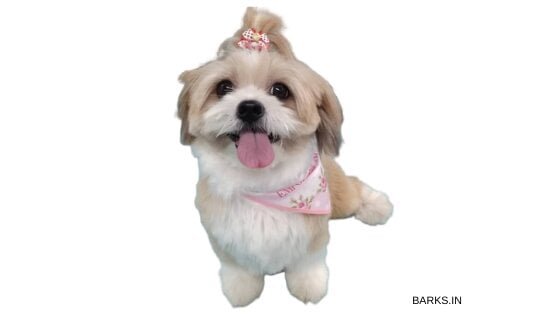
The bigger Tibetan Mastiffs tied to a pole guarded the entrance to the home. The Lhasa, on the other hand, was on the inside. At palaces, they took post on high walls from where they could look for intruders.
Their sense of smell, small size, and sharp bark made these dogs good indoor guards. These dogs were like indoor motion sensors, and their bark was like an alarm.
These dogs were not all bark and no bite. Despite their small size, these guys packed a punch.
The family companion
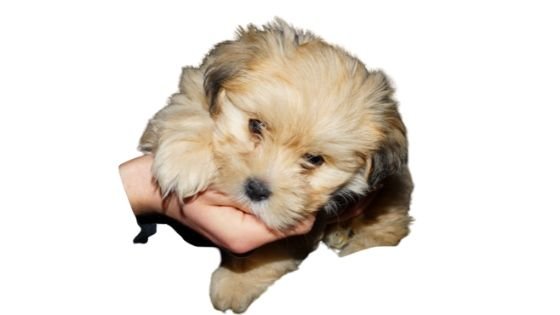
These dogs were not just indoor guards. Their small size, cute looks made them good companions. They are a loving and caring breed of dog. People say that their Lhasas could read their minds.
They are not like the average companion dog who lives to please his master. Instead, these dogs thrive in mutual respect and are self-aware. If you treat them with respect, they will treat you the same way.
We urge our reader not to think of this dog as a toy dog. They are watchdogs with a feisty character.
Current status of the Lhasa Apso
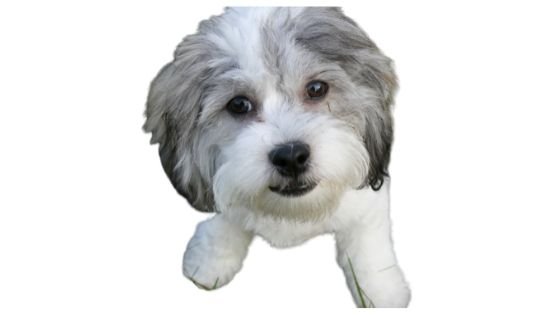
The Lhasa Apso is one of the most loved breeds of dogs today. AKC ranks these dogs in the top 100 list of popular dog breeds of the last decade. In 2018, they were 71st in the list.
They are a purebred dog. This dog’s pedigree can be traced back to the first dogs from Tibet.
Criticism of the Lhasa Apso’s bloodlines
Lhasa Apso’s bloodlines are not without its critics. Out of all the arguments on the virtue of the lines, two stands out.
Criticism 1: Shih-Tzus in the American Lhasa Apso Line
In the 1940s, breeders in the US had doubts about the virtue of this dog’s lines. When the first dogs came from the UK to the US, the breeders in the US protested. They claimed that these dogs were Shih-Tzus. This came about because the Kennel Club in the UK registered these dogs as Shih-Tzus.
No one really knows what these dogs were. Out of the 7 dogs from the UK, 3 has played a significant role in the US lines. The Hamilton line, however, remains free of these dogs.
Criticism 2: Impurity in the UK Lhasa Apso Lines
In the 1930s, Tibet closed its doors to the British. The breeders from the UK had two options to get these dogs. One was to get dogs from shady breeders in Tibet. The other was to get dogs from India.
Margaret Hayes and a few others condemned the British for doing this. They pointed out that this could pollute the UK lines.
Famous Lhasa Apso bloodlines
The Hamilton line
Hamilton line is one of the best and most recognized lines outside of Tibet. The first pair of Lhasa sent to Cuttings was Taikoo and Dinkai. This pair was not their breeding stock.
Cuttings went back to Tibet in 1937 and got his last couple of dogs, Le and Phema. Both dogs were champions in the US. Le lived for 18 years and sired several champion dogs.
Cuttings brought dogs from China named Lhassa and Shanghai. These dogs helped inject fresh stock into their line.
The pedigree of most dogs from the Hamilton line can be traced back to these dogs. Many famous kennels use the dogs from the Hamilton line. If you are looking for a pure Lhasa, then choose dogs from this line.
The Tibetan Line
There are two lines with this name.
- The dogs from Tibetan breeders: If you are looking for the best dogs, then the best place to find them is at their home. Dogs from Tibet are the truest Lhasas. These are difficult to get. The British brought back into India some of the best dogs. You might be able to find some good dogs in India.
- The German Traschi Deleg kennel (Gerti Bracksieck & Kerston Handrich): This kennel was started in 1969 to bring pure dogs from Tibet into the US lines.
The UK line

Lhasa Apso’s first reached the UK in 1854. The initial days of Lhasas in the UK were not without confusion. When these dogs first arrived, no one knew about them. The Kennel Club changed its type and its name many times. The UK breeders were under fire from M Hayes for using dogs from shady breeders.
Post the initial struggles, the UK line has become a source of some top dogs.
Which is the best Lhasa Apsos line?
No lines outside of Tibet can claim to be perfect. Even the famous Hamilton line used dogs from China, possibly Shih-Tzus.
All modern lines have their roots in the Hamilton dogs. We believe that the goal of breeding must be to preserve this dog. Any debate on the purity of the lines should be for the good of this dog.
Prominent Lhasa Apso’s
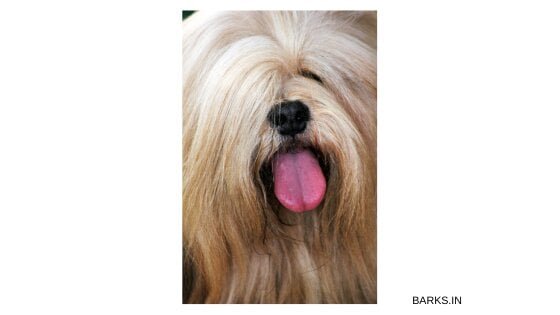
Over the years, Lhasa has been a companion of the rich and the famous. They have been part of the families of heads of state and movie stars. This stardom has helped this dog’s cause.
The list below are some notable Lhasa Apso’s
- The Hamilton Line foundation dogs
- Taikoo and Dinkai – The first pair of Lhasa Apso’s to reach the US. The 13th Dalai Lama gave Cuttings this pair as a gift in 1933. No other dogs in the history of this breed are as notable as this pair. The Hamilton line began with these dogs.
- Le and Phema – The second pair of Lhasas to reach the US. Sent to Cuttings by the Lama. Phema did not have any litters and lived to be 18. Le, on the other hand, sired many champion dogs.
- Lhassa and Shanghai – To infuse fresh stock, Cuttings brought two dogs from China. These dogs were a point of contention as some say these were Shih-Tzus.
- Saxonsprings Hackensack – The 1984 Crufts BIS winner from one of the most prominent kennels in the UK. Jean Blyth’s dog was the first Lhasa Apso to win this honor.
- Zentarr Elizabeth – Was 2012 best in the show at Crufts. M Anderson’s dog was the last Lhasa Apso to win this honor.
Useful Lhasa Apso tips

In this section, you will learn about the essential tips for a beautiful ownership experience.
Finding the perfect Lhasa
The first step – Decide
Once you decide to get a Lhasa, it is essential to understand the commitment that is needed. Lhasa’s are excellent companion dogs and will become a part of your family for the next fifteen years. It is crucial to base your decision after careful considerations.
The second step – Choice
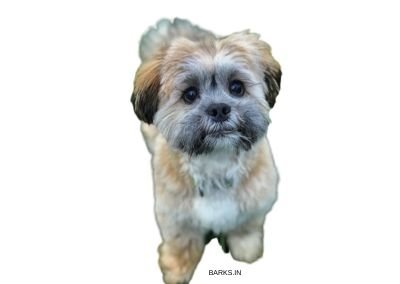
The next step is to find the perfect Lhasa. There are two choices,
- You can adopt an adult from a rescue
- You get a pedigree puppy from a reputable breeder
We recommend that you choose a dog from a shelter. Adopting a dog from a shelter requires that you do your homework. Understand the dog, its traits, and seek expert advice.
If you decide to get a pedigree pup, you need to check the breeder’s background. There are two types of breeders,
- Breeders who work towards furtherance of the breed
- Breeders of profit
Buy a puppy from a reputable breeder. They must be in good standing with a kennel club. Good breeders don’t sell their dogs to everyone. A good breeder will ask you several questions to gauge you. They are very transparent about their dogs and will typically provide references.
The third step – The dog
The third step is the most rewarding; you get to choose a puppy or an adult. Lhasa Apso’s are unlike most dogs. They are hardy, strong-willed, and yearn for mutual respect. Every Lhasa Apso is unique; there is no right or wrong puppy.
First, list down all the attributes that are compatible with your family. Then spend time observing the pups. Avoid shy and nervous puppies, look for puppies that are confident (not overly dominant bullies). The ideal Lhasa should possess a noble and dignified temperament.
The puppy should be of good health and should have a fair rated hip from OFA.
The fourth and final step – The long haul
After you select the Lhasa Apso, settle down for the most exhilarating experience. Lhasa Apso’s are excellent companions dogs. With the Lhasa Apso, looks are often deceiving. People mistake their small size for a toy dog. In reality, the Lhasa Apso is strong-willed and stubborn.
Early socialization and training are essential to prevent aggression in these dogs. Reward-based training suits the Lhasa better than any other form.
Grooming and Care of Lhasa Apso
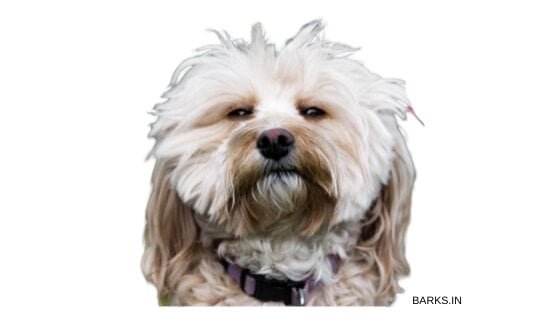
If you own a Lhasa or planning to own one, daily grooming is inevitable. Lhasa’s beautiful hair needs regular grooming to prevent matting and tangles. Grooming the Lhasa Apso is an enjoyable experience. It also builds a strong bond between dog and you. We believe these simple tips will help you in your grooming and care of your dog.
Daily grooming
Get the Lhasa to like the grooming process. Since this is going to be a daily routine, it is essential that your dog feels comfortable.
Getting the dog accustomed
- Start by getting the dog accustomed to your grooming table. Leave treats on the table, let the dog feel comfortable around the table.
- When the dog is comfortable, lift the dog onto the table. Treat your Lhasa while he is standing on the table.
- While at the table, let the dog sniff the grooming brush. Gently groom the dog and treat.
Repeat the same routine for a few weeks. This routine helps the dog relate grooming with a positive and enjoyable experience. Remember to do this slowly. Grooming the Lhasa Apso is a daily process; these steps help build a positive relationship.
The grooming process
- Start with a tangle tweezer on the outer coat. Tangle tweezer smoothens the hair and will help you deal with mats and tangles.
- The next step of grooming is parting the hair from head to tail. Do this by running the comb along the spine and allowing the hair to part naturally.
- While grooming, use a downward motion with the flow of the hair.
- The next step is to groom the periphery, the neck, rear, and hind legs.
- Slowly move towards the dog’s abdomen, working your way towards the dog’s chest and finishing with the head.
The entire grooming process should take you between 15 to 20 minutes. Doing this will leave your dog tangle and mat-free. The trickiest parts will be the dog’s underside and backside of its front legs. With experience, you will soon find this easy and pleasurable.
Dealing with tangles and mats

All Lhasa Apso owners have to deal with tangles and mats. Don’t panic; dealing with tangled hair is not as tricky as it sounds.
- When you hit a snag, try and gently comb through the tangles using a downward motion.
- If this does not work, then use a mat splitter and run it vertically. Once you break the knot apart, use a tangle tweezer to brush the fur gently apart.
- To break the more complicated knots, use a combination of grooming spray, rake tool, and tangle tweezer. When dealing with more hardened knots, remember not to pull the fur. Ensure that the whole grooming process is enjoyable for your dog.
People who find grooming the Lhasa difficult, trim the dog’s coat to manageable lengths.
The proper way to bathe the Lhasa Apso

Lhasa Apso’s require bathing based on their activity levels. Active dogs tend to dirty their coats often and require bathing. Bathing them once every couple of weeks should keep them clean and fresh.
The Lhasa’s long strands tend to mat and tangle easily. Hence, take extra care while bathing these dogs.
- The best way to wash them is to soak their hair entirely, to the skin. Then apply shampoo using a downward motion slowly.
- Applying the conditioner should also be done in the same way, using a downward motion.
- Drying their coat also requires attention. The best approach is to dry in layers, gradually moving to a wet area.
Always use a mild shampoo, watch for allergic reactions whenever you switch shampoos. Remember to use water that is not very warm, Lhasa’s don’t like hot or warm water. For Lhasa’s nails, use a nail grinder instead of a clipper.
Training your Lhasa Apso
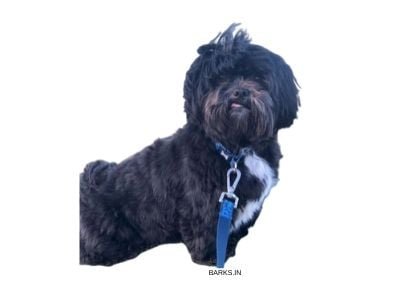
Lhasa’s have a stubborn character when left untrained; they can become challenging to manage. A well trained Lhasa is an excellent family companion. Unlike other dogs, Lhasa’s require specialized training that suits their character and temperament.
In Tibet, people say when a Lhasa looks into a mirror, it sees a lion. This quote summarizes the character of this dog. They are no pushovers and don’t mistake their small size for a humble little heart. While they take delight in pleasing you, it is not their sole purpose. Lhasa cherishes mutual respect; hence using conventional training methods does not work for them.
Positive reinforcement training
In our opinion, this is the best method for training the Lhasa Apso. In this method, the dog is rewarded every time it exhibits a desirable trait. The dog does not get a reward when undesirable characteristics are displayed. This method suits the Lhasa Apso better because it reinforces positive behavior. Your Lhasa is free to choose not to obey, but that is not reinforced.
Treats
- Identify healthy treats that your dog loves. Cut them into tiny pieces to ensure that your dog does not fill up quickly.
- Pick multiple varieties of treats, dogs get bored if they get the same one. Mixing different types keeps them guessing and interested.
- Remember to adjust their meal portions based on the treats that they get during training sessions.
Positive behavior reinforcement

- Positive reinforcement requires consistency and accuracy. Every time the dog exhibits a desirable trait, it should be rewarded.
- The reward should be immediate so that the dog associates reward with good behavior.
- The dog should not be rewarded for bad behavior. Remember, the reward is not just the treat in your hand. For a dog playing, chasing, fetching, etc. are rewards too.
- Don’t grab a shoe and get into a tug war with the dog when he chews on it. This is rewarding negative behavior. The easiest way is to get him to leave the shoe by showing him a treat. The moment he steps away, treat the dog.
- When the dog displays some consistency in behavior, gradually withdraw the treat. For instance, if the dog sits on cue, make the reward random. Replace the reward with a pat or a kind word.
- Making the reward random ensures that your dog isn’t over-reliant on rewards for good behavior.
Clicker training

Clicker training is a slight variant to the positive reinforcement training. A clicker is used to mark or cue the precise time that Lhasa exhibits positive behavior. The moment dog obeys is characterized by a click, and a treat follows. Using a clicker is much more useful than mere positive reinforcement.
Tips
- Use varieties of rewards to keep the dog interested.
- Lhasa Apso’s are vigilant, ensure that the training sessions are free of all distractions.
- Keep the training sessions short. Not more than 10 minutes long.
- Remember to make the rewards random.
- Using a clicker or a cue word to mark a positive behavior helps build consistency.
- Treats are not only something the dog can eat. Anything that the dog enjoys is a treat to them.
- The treat or the cue (clicker) has to be instant.
- Constantly innovate while training to incorporate lessons that you learn along the way.
How much does a Lhasa Apso cost?
The dog’s price dramatically varies based on quality and pedigree. A top quality BIS winner pup costs $1500 to $5000. The average puppy costs about $600.
Is a Lhasa Apso a good family dog?
These dogs are excellent companion dogs. Their small-size, cute looks and alertness makes them one of the best family dogs. They are good with children and other pets.
Lhasa Apso’s are wary of new people and suspicious of strangers. Once a Lhasa Apso bonds with a person, they remain friends forever.
Do Lhasa Apso shed a lot?
The Lhasa, despite its long beautiful coat, sheds its hair like a human. Their hair has a similar texture to ours, and shedding is continuous like us.
Are Lhasa Apsos aggressive?
The Lhasa Apso is not aggressive but has an assertive character. These dogs are wary and suspicious of strangers. The Lhasa Apso can be aggressive towards intruders if they don’t heed the dog’s warning barks.
Are the Lhasa Apso easy to train?
It is a tricky dog to train as they are independent and stubborn. They respond well to positive reinforcement training. Lhasa can be taught many tricks.
Conclusion
The Lhasa Apso is a loving and caring dog. Life with these dogs is an experience that is full of fun and joy. Tibetans believe this dog to be a good luck charm. Our own experiences with these dogs have been joyous and memorable.
We hope the time that you spent in reading this was useful. Please comment and share your experiences with this dog from the roof of our world.

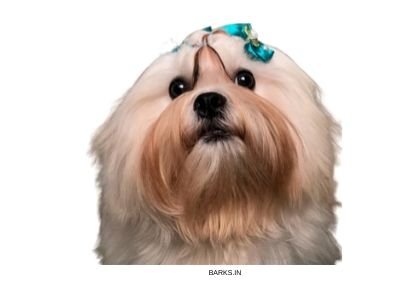






Thank you James for reading our post. The problem with popular dogs is, there is just too much information. We wanted our post to be a single source of truth for our readers.
Excellent
Can I get at Hyderabad LHASA APSO
Hi Sekhar,
Thanks for reading our post. Check dogsindia.com for Lhasa Apso listings